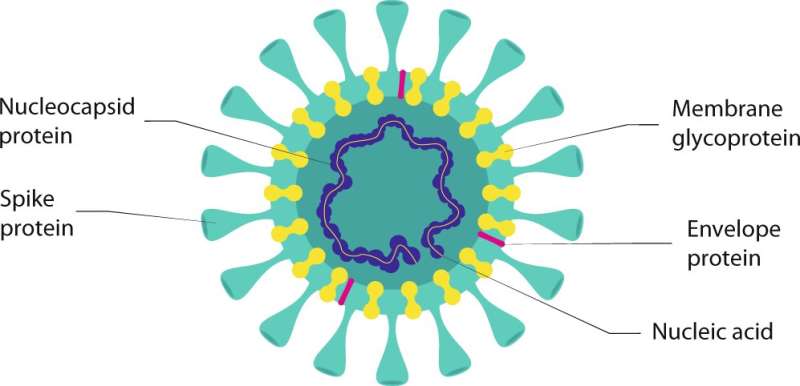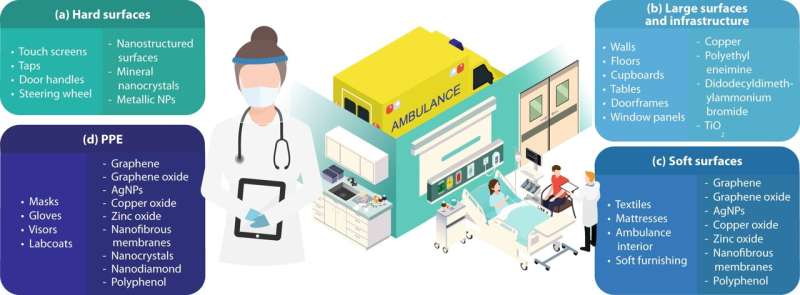Antiviral surfaces, surface coatings and their mechanisms of action

Scientists from The National Physical Laboratory (NPL) and the National Biofilms Innovation Centre (NBIC) provide a comprehensive review of the current state of knowledge, research direction and practices in the area of antiviral materials and coatings. The study is presented in the consortium's review article "Antiviral surfaces and surface coatings and their mechanisms of action," published in Communications Materials.
In today's global society, viral infections have become a serious health challenge, with disease outbreaks able to spread easily and rapidly cross continents. The Coronavirus pandemic has increased the demand for antiviral measures and treatments for clean surfaces, especially in public places.
The team reviewed a range of natural and synthetic surface materials and coatings with documented antiviral properties, including metals, polymers and biopolymers, graphene and antimicrobial peptides, as well as reviewing the physico-chemical properties of surfaces which can influence virus attachment.
The findings also provide an overview of the current practices and applications of antiviral materials and coatings in consumer products, personal protective equipment, healthcare and public settings.
Typically, there is no single solution to prevent the spread of viral infections, and different modes of transmissions adds to the difficulty. The solution often requires a multiple-barrier protection, and next to high hygiene standards and vaccination program, a number of control measures including adequate personal protective equipment (PPE) or antiviral surfaces in public facilities.

The insights, summarized from the published literature, indicate that material science can play a vital role in the development of conceptual and practical measures to slow infectious outbreaks and that both existing and innovative broad-spectrum antiviral strategies should be considered, which could contribute to the challenge and preparedness of future viral pandemics.
NPL is also already working with industry to support new UK based manufacturing of face coverings for healthcare and the general public. NPL experts are also able to provide guidance on meeting relevant standards, and testing of products and materials for both standard and novel design to aid design optimisation.
Ian Gilmore, Head of Science, NPL, states: "Materials science and technology has an important role in reducing virus transmission. This comprehensive review summarizes the latest advances in an accessible form which is hoped will provide a useful resource for research and development scientists in their innovation of new technologies."

"Many materials would exert both antiviral and antimicrobial properties but until the recent COVID-19 pandemic, the majority of research concentrated, predominantly, on the antimicrobial properties of different surface materials and coatings, with the antiviral properties being studied less frequently. A substantial shift in focus can be seen over the past year, towards the understanding of antiviral mechanisms of materials." says Paulina Rakowska, Research Innovation Development Manager at NBIC.
More information: Paulina D. Rakowska et al, Antiviral surfaces and coatings and their mechanisms of action, Communications Materials (2021). DOI: 10.1038/s43246-021-00153-y
Provided by National Physical Laboratory





















